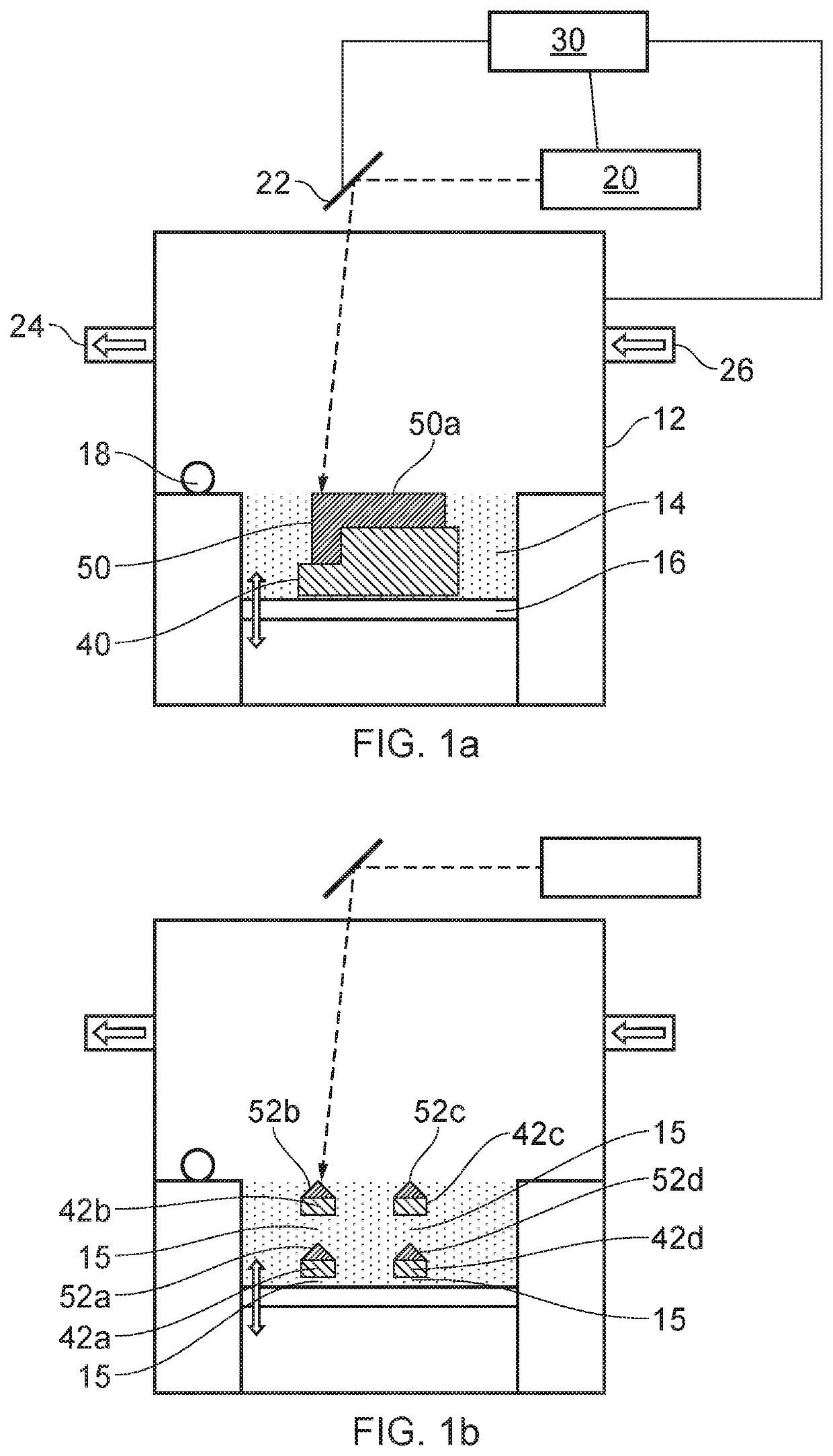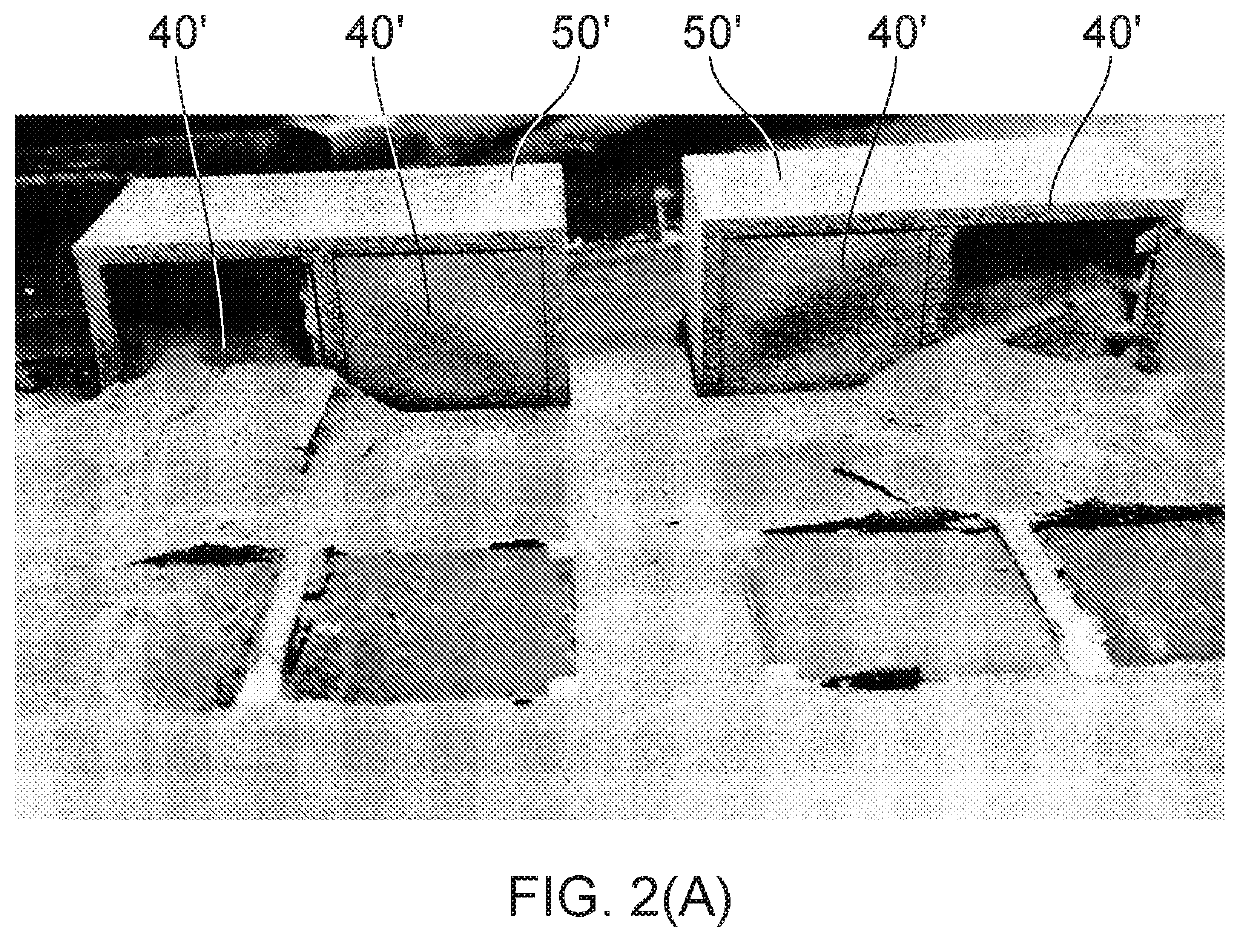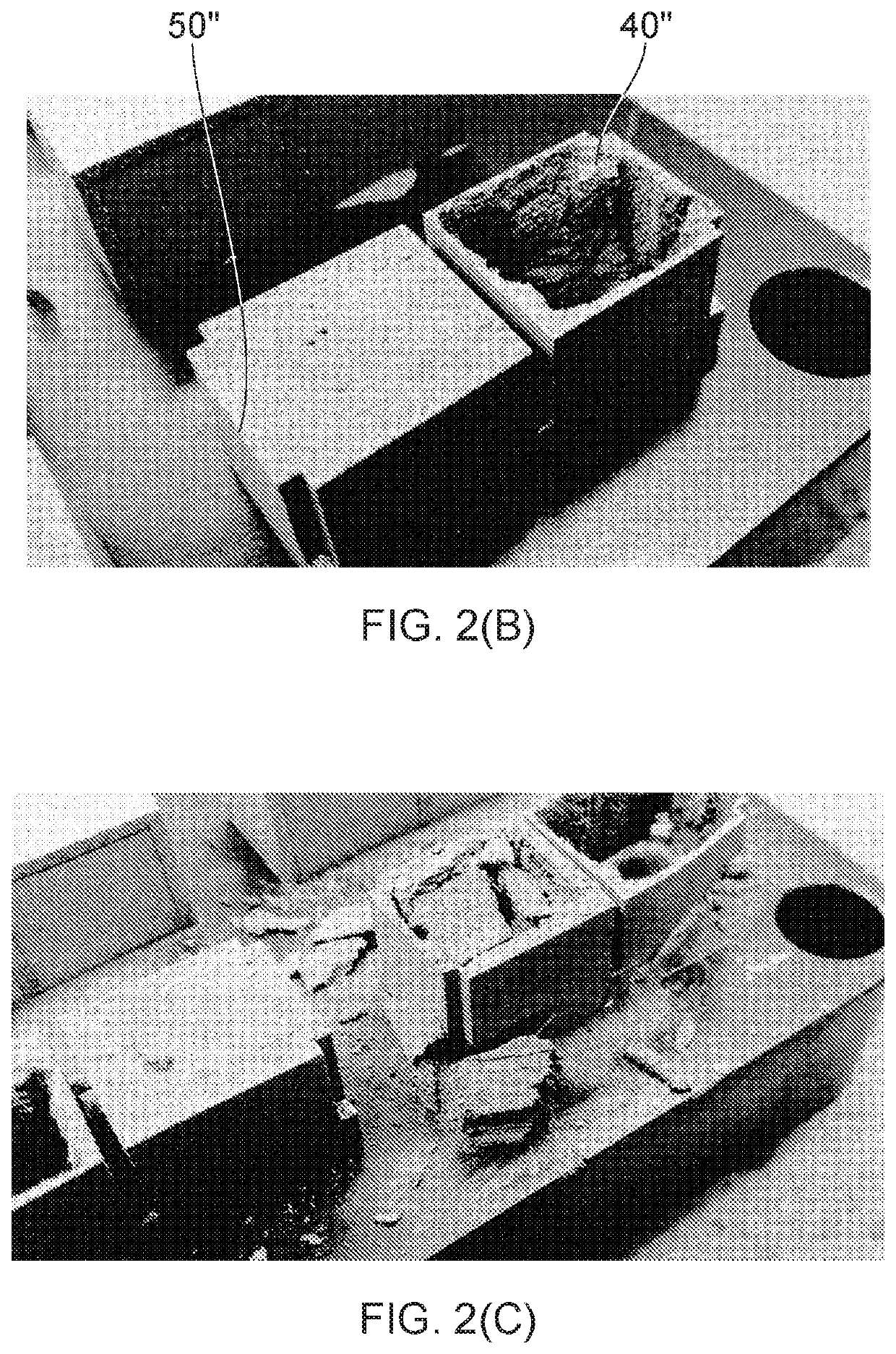Additive manufacture
- Summary
- Abstract
- Description
- Claims
- Application Information
AI Technical Summary
Benefits of technology
Problems solved by technology
Method used
Image
Examples
Embodiment Construction
[0058]It may be appreciated that references herein to vertical or horizontal are with reference to the axis of the additive manufacture process. In particular, as powder bed fusion is a layer by layer process the horizontal axis corresponds to the plane of the layers (which is in turn defined by the powder bed and support). The corresponding alignment of a component being manufactured is selected during optimisation of the process and is not therefore limited to any specific direction. Any other references to directions such as above / below or upward / downward are likewise non-limiting with respect to the component per se and should be understood to generally refer to orientation during the additive manufacturing process.
[0059]A metallic powder bed laser fusion additive manufacture apparatus 10 for use in embodiments of the present invention is shown in FIG. 1a. The apparatus may for example be a commercially available apparatus (possibly with some modification to enable embodiments o...
PUM
| Property | Measurement | Unit |
|---|---|---|
| Temperature | aaaaa | aaaaa |
| Density | aaaaa | aaaaa |
| Area | aaaaa | aaaaa |
Abstract
Description
Claims
Application Information
 Login to View More
Login to View More - R&D
- Intellectual Property
- Life Sciences
- Materials
- Tech Scout
- Unparalleled Data Quality
- Higher Quality Content
- 60% Fewer Hallucinations
Browse by: Latest US Patents, China's latest patents, Technical Efficacy Thesaurus, Application Domain, Technology Topic, Popular Technical Reports.
© 2025 PatSnap. All rights reserved.Legal|Privacy policy|Modern Slavery Act Transparency Statement|Sitemap|About US| Contact US: help@patsnap.com



